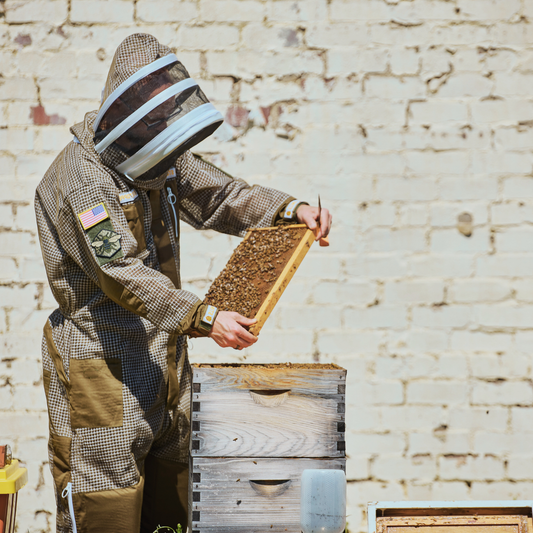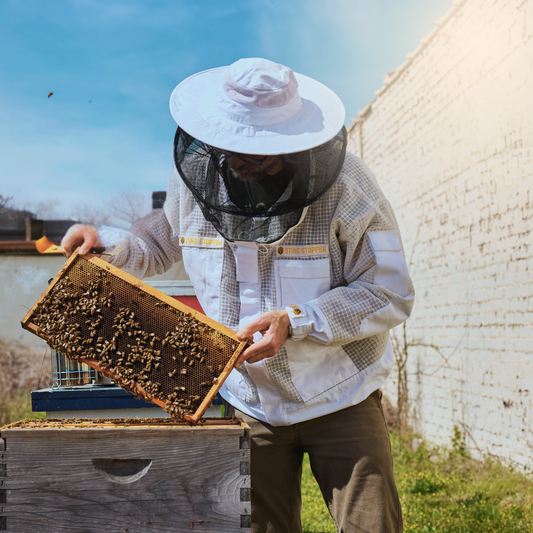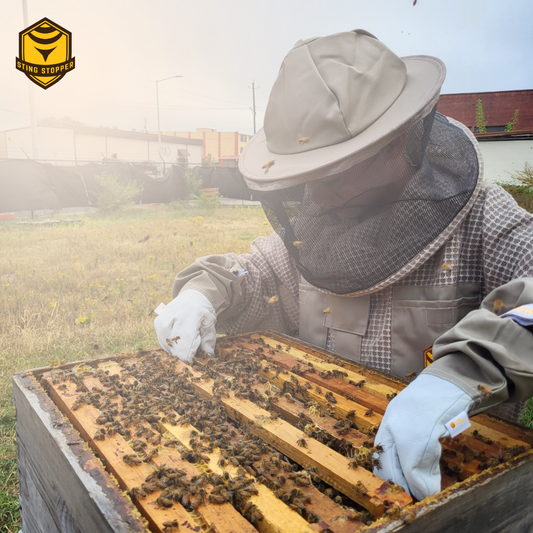Key Features to Look for in a Beekeeping Suit
Most people purchase their bee suits online, often relying on poor photos or inaccurate size charts. We’re here to help you make an informed decision so you end up with a suit that meets your needs.
We offer several other detailed guides, including comprehensive information about the essential beekeeping equipment to get started.
At its core, a beekeeping suit should protect the wearer from stings and fit comfortably during use. Modern suits are designed for maximum convenience, featuring accessible zippers, reinforced pockets, and easy maintenance to make beekeeping safer and more practical. Deep pockets allow beekeepers to carry essential tools and personal items while working.
You might expect these basic criteria to be easy to find when shopping for a bee suit, but that’s often not the case.
One popular veil style is the fencing veil, which offers excellent protection and comfort thanks to its roomy, detachable design that enhances visibility and airflow.
For the best results, shop from reputable sources to ensure you get high-quality suits and accessories tailored to your needs.













